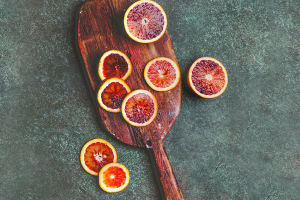Lavender, also known as the perfume plant, is native to the Mediterranean coast. It blooms in June each year, and its blue-purple flowers emit a pleasant fragrance. Lavender has strong adaptability and can withstand both high and low temperatures.
It can tolerate low temperatures of minus 20 degrees in winter and can also resist temperatures as high as 40 degrees Celsius. Lavender is a dry plant that does not require much water. Generally, annual rainfall of 600-800 mm is sufficient for normal growth.
Since the Middle Ages, lavender has been widely used as a source of medicine and perfume, as well as for making soaps, flavorings, and crafts. Lavender has a long history of medicinal use and is known for its anti-waste, anti-depression, anxiety-reducing, and sedative properties.
Lavender is known as the "King of plants". Its fragrance is elegant and fresh, and it is recognized worldwide for its calming and soothing effects. Lavender extracts contain a variety of mild ingredients that can relax the nervous system, promote sleep, and have bacteriostatic effects.
The aroma and medicinal properties of lavender come from its flowers and leaves, which contain various chemical components, including volatile oils, flavonoids, fragrant beans, and tannins.
The volatile oil of lavender is one of its most characteristic ingredients, and the most important component is linalool. This volatile oil has a sedative and analgesic effect and is one of the main components of many perfumes and cosmetics.
Studies have shown that lavender can help treat anxiety and systemic anxiety and can also improve related symptoms, such as irritability, sleep disorders, and physical discomfort.
Lavender comes in many different types, not just with purple flowers, but also white, pink, blue, and other colors, each with different characteristics and uses. For example, white lavender flowers are more suitable for making aromatic candles and shampoo, while blue lavender flowers are more suitable for making aromatic bags and essential oils.
In daily life, lavender can be used in various ways, including:
1. Lavender essential oil: Add a few drops of lavender essential oil to bathwater to promote sleep and relieve stress.
2. Lavender tea: Putting dried lavender flowers in boiling water to make the tea can relieve anxiety and improve sleep.
3. Lavender-dried flower bag: Put dried lavender flowers in a small bag, place it under the mattress or in the wardrobe to keep clothes smelling fresh, or place it next to the desk to help improve work efficiency and relieve fatigue.
4. Lavender essential oil massage: Mix lavender essential oil with a basic oil, and then massage the head, shoulders, and neck to help relieve stress and headaches.
However, although lavender has many uses and benefits, it should be noted that it may cause allergies or discomfort. Therefore, when using lavender, it is essential to follow the correct dosage and methods and consult or test before use to ensure safety.
Lavender is a versatile plant with many benefits and uses. It's pleasant fragrance and soothing properties make it an excellent choice for promoting relaxation and relieving stress. Whether used in essential oils, teas, or dried flower bags, lavender is a natural and effective way to enhance one's overall well-being.


